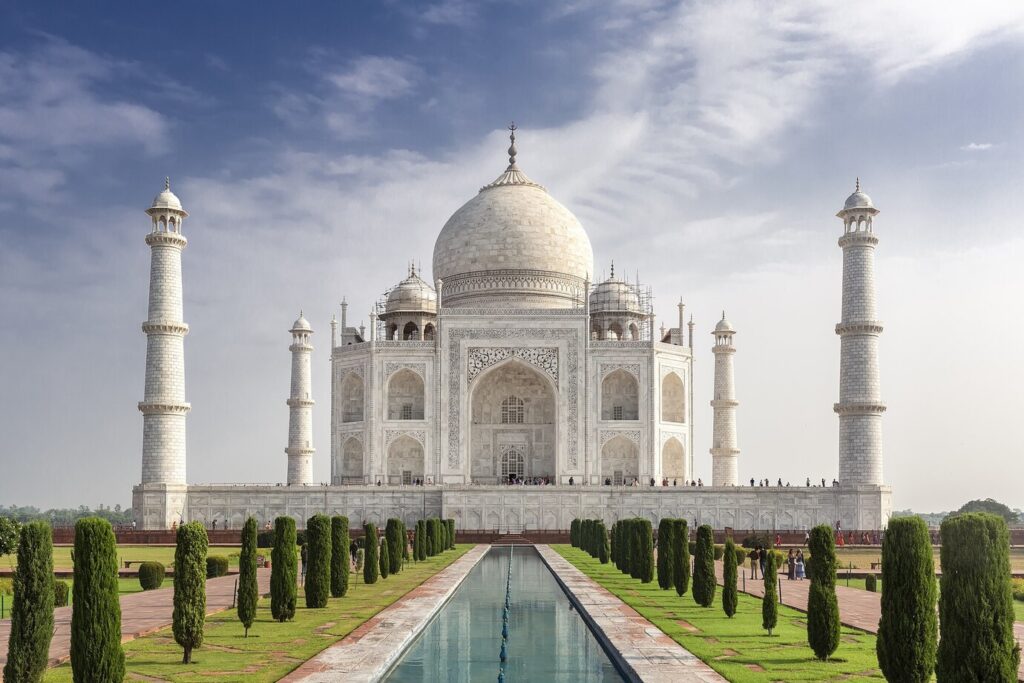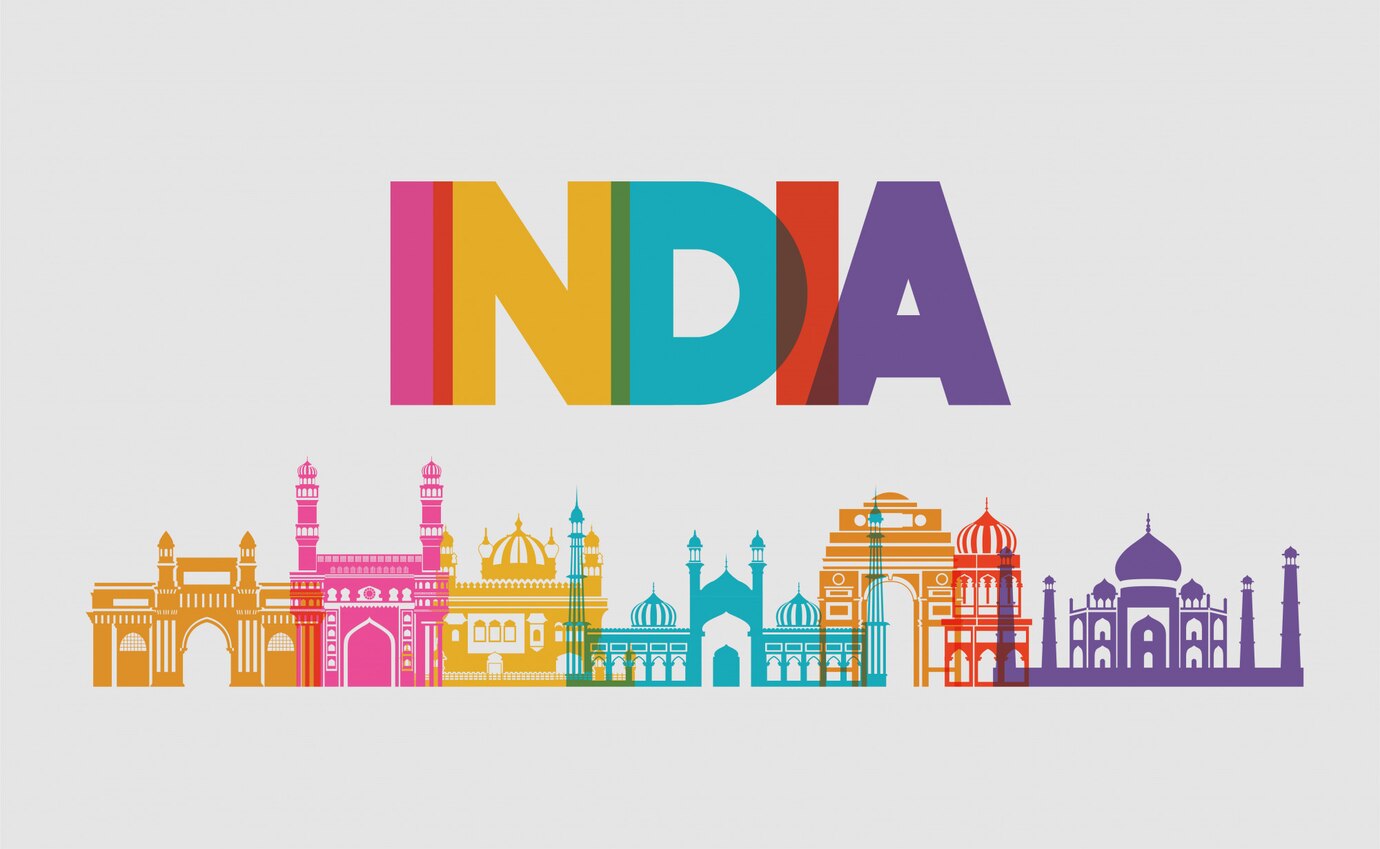India, with its vast landscapes, rich history, and diverse cultures, offers travellers a kaleidoscope of experiences across its different regions. From the snow-capped peaks of the Himalayas to the sun-kissed beaches of Goa, each region has its own unique charm and attractions waiting to be explored. In this detailed travel guide, we’ll take you through the diverse regions of North India, South India, East India, West India, and Northeast India, providing insights into what makes each region special and tips on how to make the most of your journey.
1. North India Travel Guide
North India is a land of contrasts, where ancient traditions blend seamlessly with modernity. This region is home to some of India’s most iconic landmarks and vibrant cultures.
Delhi: The capital city, Delhi, serves as a gateway to North India and boasts a rich history spanning millennia. From the imposing Red Fort and the intricate architecture of Humayun’s Tomb to the bustling lanes of Chandni Chowk, Delhi offers a glimpse into India’s past and present.
Rajasthan: Known for its royal heritage and desert landscapes, Rajasthan is a must-visit for history buffs and adventure seekers alike. Explore the majestic forts and palaces of Jaipur, the romantic lakes of Udaipur, and the desert city of Jaisalmer with its golden sands and intricately carved havelis.
Uttar Pradesh: Home to the iconic Taj Mahal in Agra, Uttar Pradesh offers a glimpse into the Mughal era’s architectural splendor. Visit the ancient city of Varanasi on the banks of the sacred Ganges River, where spirituality and culture converge in a mesmerising blend of rituals and traditions.

Himachal Pradesh and Uttarakhand: Nestled in the lap of the Himalayas, Himachal Pradesh and Uttarakhand beckon travellers with their serene landscapes and adventure activities. Explore the hill stations of Shimla, Manali, and Nainital, go trekking in the lush valleys of Himachal, or embark on a spiritual journey to Rishikesh, the yoga capital of the world.
2. South India Travel Guide
South India is known for its lush greenery, ancient temples, and rich cultural heritage. This region offers a tranquil retreat from the hustle and bustle of city life.
Kerala: Often referred to as “God’s Own Country,” Kerala is famous for its backwaters, serene beaches, and lush greenery. Cruise the tranquil backwaters of Alleppey in a traditional houseboat, indulge in rejuvenating Ayurvedic treatments, and witness Kathakali performances that bring ancient myths to life.
Tamil Nadu: Home to some of the oldest continuously inhabited cities in the world, Tamil Nadu boasts magnificent temples, vibrant festivals, and classical arts. Visit the Meenakshi Temple in Madurai, the UNESCO World Heritage site of Mahabalipuram, and the bustling metropolis of Chennai, where tradition and modernity coexist harmoniously.
Karnataka: From the palaces of Mysore to the tech hub of Bangalore, Karnataka offers a blend of history, culture, and modernity. Explore the ruins of Hampi, a UNESCO World Heritage site, and the coffee plantations of Coorg, or embark on a wildlife safari in Bandipur National Park.
Andhra Pradesh and Telangana: Rich in history and culture, Andhra Pradesh and Telangana offer a glimpse into India’s past. Visit the ancient Buddhist site of Amaravati, the iconic Charminar in Hyderabad, and the pristine beaches of Vishakhapatnam.
3. East India Travel Guide
East India is known for its natural beauty, tribal cultures, and colonial heritage. This region offers a unique blend of adventure and tranquilly.
West Bengal: Explore the cultural capital of India, Kolkata, with its colonial architecture, bustling markets, and vibrant arts scene. Visit the terracotta temples of Bishnupur, the tea estates of Darjeeling, and the UNESCO World Heritage site of the Sundarbans, home to the elusive Royal Bengal tiger.
Odisha: Known for its ancient temples and pristine beaches, Odisha offers a glimpse into India’s architectural and cultural heritage. Visit the Sun Temple in Konark, the Jagannath Temple in Puri, and the tribal villages of Koraput, where ancient traditions are preserved.
Bihar: Explore the ancient ruins of Nalanda and Rajgir, once centres of learning and spirituality. Visit Bodh Gaya, where Buddha attained enlightenment under the Bodhi Tree, and Vaishali, the birthplace of Lord Mahavira, founder of Jainism.
Jharkhand: Known for its natural beauty and tribal culture, Jharkhand offers opportunities for trekking, wildlife safari, and cultural experiences. Visit the Betla National Park, the tribal villages of Netarhat, and the scenic waterfalls of Hundru and Jonha.
4. West India Travel Guide
West India is a vibrant tapestry of cultures, landscapes, and cuisines. From the bustling streets of Mumbai to the serene beaches of Goa, this region has something for every traveller.
Maharashtra: Explore the bustling metropolis of Mumbai, India’s financial capital, known for its colonial-era architecture, vibrant nightlife, and Bollywood film industry. Visit the rock-cut caves of Ajanta and Ellora, the hill stations of Mahabaleshwar and Lonavala, and the vineyards of Nashik.
Gujarat: Immerse yourself in Gujarat’s rich cultural heritage and vibrant traditions. Visit the UNESCO World Heritage site of Champaner-Pavagadh, the Asiatic lions of Gir National Park, and the white desert of Kutch during the Rann Utsav festival. Explore the vibrant markets of Ahmedabad and the coastal town of Dwarka, one of the Char Dhams (four sacred Hindu pilgrimage sites).
Goa: Known for its sun-kissed beaches, Portuguese heritage, and vibrant nightlife, Goa is a favourite destination for beach lovers and partygoers alike. Relax on the pristine beaches of Calangute and Palolem, explore the colonial architecture of Old Goa, and indulge in seafood delicacies at beach shacks and restaurants.
Rajasthan: The land of kings, Rajasthan is famous for its royal heritage, desert landscapes, and vibrant festivals. Explore the palaces of Jaipur, the lakes of Udaipur, and the desert city of Jaisalmer with its golden sands and intricately carved havelis. Witness the colourful celebrations of festivals like Pushkar Camel Fair and Desert Festival, where traditions come alive.
5. Northeast India Travel Guide
Northeast India is a hidden gem, known for its breathtaking landscapes, diverse cultures, and warm hospitality. This region offers a glimpse into India’s tribal heritage and natural beauty.
Assam: Explore the lush tea gardens of Assam, cruise the Brahmaputra River, and visit the Kamakhya Temple in Guwahati. Discover the wildlife-rich Kaziranga National Park, home to the one-horned rhinoceros, and Majuli, the world’s largest river island.
Meghalaya: Known as the “abode of clouds,” Meghalaya offers spectacular landscapes, including the living root bridges of Cherrapunji and the pristine Umngot River in Dawki. Explore the cultural diversity of Shillong, the rock capital of India, and indulge in local delicacies like jadoh and bamboo shoot curry.
Arunachal Pradesh: With its snow-capped peaks, dense forests, and Buddhist monasteries, Arunachal Pradesh is a paradise for nature lovers and adventure enthusiasts. Visit Tawang and its famous monastery, trek through the scenic Dirang Valley, and explore the tribal villages of Ziro, known for their unique Apatani culture.
Sikkim: Nestled in the lap of the Himalayas, Sikkim offers pristine landscapes, Buddhist monasteries, and trekking trails with panoramic views. Visit Gangtok, the capital city, explore the serene Tsomgo Lake and Nathula Pass, and embark on treks to Yuksom and Goecha La.
Conclusion
India’s diverse regions offer a wealth of experiences for travellers seeking adventure, cultural immersion, spiritual retreat, or simply relaxation amidst stunning landscapes. Whether you’re exploring the vibrant markets of Delhi, cruising the backwaters of Kerala, or trekking in the Himalayas, each region has something unique to offer.
FAQs About Regional Travel Guides in India
1. What are the must-visit destinations in North India?
Answer: North India is home to iconic destinations such as Delhi, Agra (home of the Taj Mahal), Jaipur (the Pink City), and the hill stations of Himachal Pradesh and Uttarakhand. Each offers unique cultural experiences, historical landmarks, and breathtaking landscapes.
2. Which states are included in South India?
Answer: South India encompasses states like Kerala, Karnataka, Tamil Nadu, and Andhra Pradesh, along with Telangana. These states are known for their lush greenery, ancient temples, vibrant festivals, and serene backyards.
3. What are the cultural highlights of East India?
Answer: East India boasts cultural gems such as Kolkata’s colonial architecture and vibrant arts scene, Odisha’s ancient temples (like the Sun Temple in Konark), and the tribal cultures of Bihar and Jharkhand.
4. What makes West India a popular travel destination?
Answer: West India is renowned for Mumbai’s bustling city life, Goa’s beaches and Portuguese heritage, Gujarat’s cultural festivals and wildlife sanctuaries, and Rajasthan’s royal palaces and desert landscapes.
5. Why should travellers explore Northeast India?
Answer: Northeast India offers pristine landscapes, rich biodiversity, and diverse tribal cultures. Highlights include Assam’s tea gardens and wildlife, Meghalaya’s living root bridges, Arunachal Pradesh’s Buddhist monasteries, and Sikkim’s Himalayan vistas.
6. When is the best time to visit each region of India?
Answer: The best time to visit varies by region.
- North India: October to March for cool weather.
- South India: November to February for pleasant weather.
- East India: October to March for comfortable temperatures.
- West India: November to February for cool, dry weather.
- Northeast India: March to May and October to December for pleasant weather and festivals.
7. What are some unique experiences travellers can have in India?
Answer: India offers a wide range of unique experiences, such as cruising the backwaters of Kerala, attending spiritual ceremonies in Varanasi, exploring ancient ruins in Hampi, and trekking in the Himalayas.
8. How can travellers plan a budget-friendly trip to India?
Answer: To travel on a budget in India, consider staying in budget accommodations like hostels or guesthouses, eating at local eateries, using public transportation, and exploring free or low-cost attractions like temples and parks.
9. What are some safety tips for travellers in India?
Answer: While India is generally safe for travellers, it’s advisable to take precautions like avoiding isolated areas at night, respecting local customs and dress codes, and staying informed about current events and travel advisories.
10. How can travellers respect local customs and cultures in India?
Answer: Respect local customs by dressing modestly in religious places, asking for permission before taking photos of people, and learning a few basic phrases in Hindi or the local language to interact respectfully with locals.

[…] of the most affordable travel destinations in India include Puducherry, Pushkar, Kodaikanal, Darjeeling, Gokarna, Udaipur, Itanagar, Varanasi, McLeod […]
[…] often referred to as the “Mini Switzerland of India,” is a small region in Uttarakhand that offers stunning views of the Himalayas. It serves as the base for trekking to […]